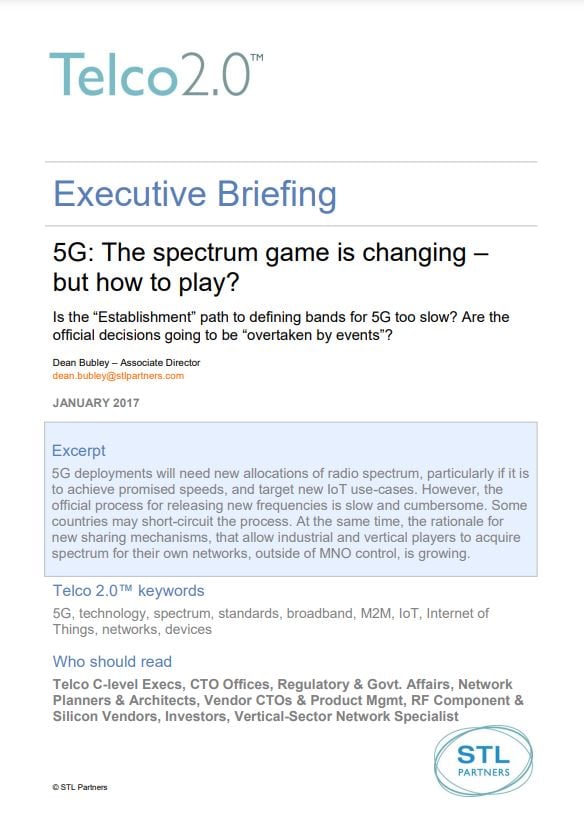5G: The spectrum game is changing – but how to play?
£1,000.00 excl VAT
5G deployments will need new allocations of radio spectrum, particularly to achieve promised speeds, and target new IoT use-cases. However, the official process for releasing new frequencies is slow and cumbersome. Some countries may short-circuit the process. At the same time, the rationale for new sharing mechanisms, that allow industrial and vertical players to acquire spectrum for their own networks, outside of MNO control, is growing. What should telcos do?
Description
Format: PDF filePages: 24 pagesCharts: 10Author: Dean BubleyPublication Date: January 2017
Table of Contents
- Executive Summary
- Introduction
- Why does spectrum matter?
- Who are the stakeholders for spectrum?
- Spectrum vs. business models
- Does 5G need spectrum harmonisation as much as 4G?
- Spectrum authorisation types & processes
- Licensed, unlicensed and shared spectrum
- Why is ITU involved, and what is IMT spectrum?
- Key bands for 5G
- Overview
- 5G Phase 1: just more of the same?
- mmWave beckons – the high bands >6GHz
- Conclusions
Table of Figure
- Figure 1 – 5G spectrum has multiple stakeholders with differing priorities
- Figure 2 – Multi-band support has improved hugely since early 4G phones
- Figure 3 – A potential 5G deployment & standardisation timeline
- Figure 4 – ITU timeline for 5G spectrum harmonisation, 2014-2020
- Figure 5 – High mmWave frequencies (e.g. 28GHz) don’t go through solid walls
- Figure 6 – mmWave brings new technology and design challenges Figure 7 – Key mid-term future bands for 4G expansion and 5G “pioneers”
- Figure 8 – 3-4GHz band shows a lot of global potential for 5G
- Figure 9 – Proposed mmWave pioneer bands vary by region
- Figure 10 – Fixed-access use-cases may be the lead-in to the 5G era
Technologies and industry terms referenced include: 5G, broadband, devices, Internet of Things, IoT, M2M, Networks, spectrum, standards, Technology

